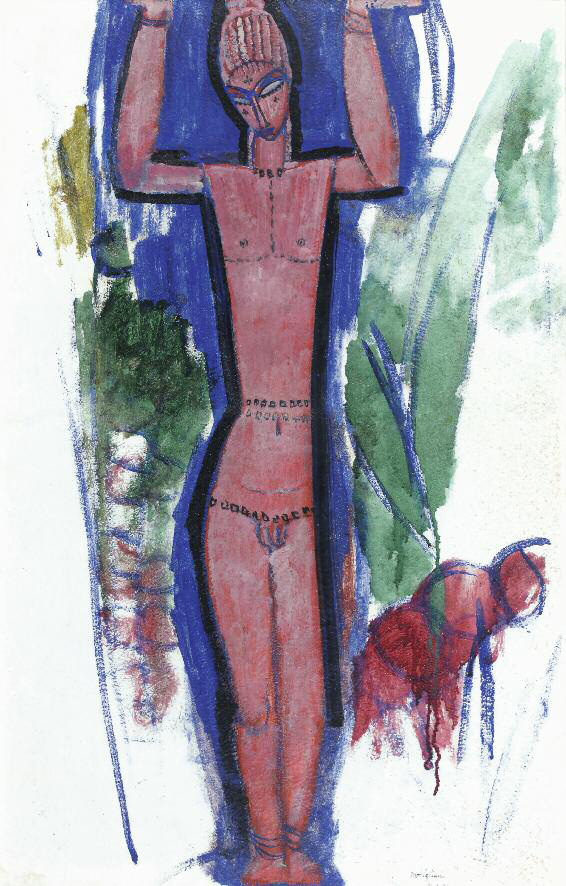secretmodigliani.com
to continue is a complete acceptance without reservations of any kind. You can consult the terms in this link.

| Pfannstiel | Lanthemann | Ceroni | J. Modigliani | Parisot | Patani | Restellini | Wayne |
| NO | NO | NO | NO | NO | NO | YES | ? |
Jorge de Brito Collection
Sale Tajan, Paris, Hommage à Jorge de Brito - 22 October 2011 - Lot 26 - Dated in catalogue in 1916
Estimate: 200.000 - 300.000 €
Saleroom Notice
Please note that Marc Restellini has confirmed that this work will be included in the Modigliani catalogue raisonne that he is preparing in conjunction with the Wildenstein Institute.
In the auction text: CARIATIDE, 1916 / Technique mixte sur carton, page 56
Fischer Family Collection?
In process
Paris, Amadeo de Souza-Cardoso, Grand Palais, Galeries Nationales, 2016 (dated in 1911)
In process

-----------------------------------------------------------------------------------------------------------------------------
Text in the auction catalogue:
Amedeo Modigliani’s focus as an artist was sculpture. As explained by the critic and art dealer Adolph Basler: “For
years, Modigliani did nothing but draw, tracing the graceful arabesques of the caryatids he planned to carve in stone, lightly
accentuating their curves with blue or pink. He obtained a bold and harmonious drawing style, which reflected his personality, full of
charm, a great freshness, and sensitivity”.
Modigliani drew several caryatids. Some could be considered studies for future sculptures, while others were much more elaborate
and fully conceived drawings. The caryatid presented here belongs to this second category. Modigliani was not satisfied with graphite
alone – he defined his drawing with black outlines and filled it with color, in other words, life. The shape of the drawing is very sculptural;
it is purified and highly stylized, evoking African and Oceanic tribal art, as well as the original Greek and Roman model, without
which these “sculptures” could never stand…
What particularly interested Modigliani were the position and shape imposed by the caryatid as a model. The posture produced a complex
rhythm of horizontal, vertical, diagonal, and curved lines, which hypnotized Modigliani.
To reinforce the traditional image of the model, Modigliani sharpens and reduces shapes to their utmost simplicity; this gives more lightness
to the touch while emphasizing the human intensity. However, the caryatid we present here seems to be androgynous. So, it is
Man, in the generic sense, which is represented. With raised arms, he looks like a totem. Modigliani uncharacteristically created a
context of nature around the figure by adding the intense primary colors blue, green and red. This representation of Man and Earth is
thus of particular interest among Modigliani’s works.